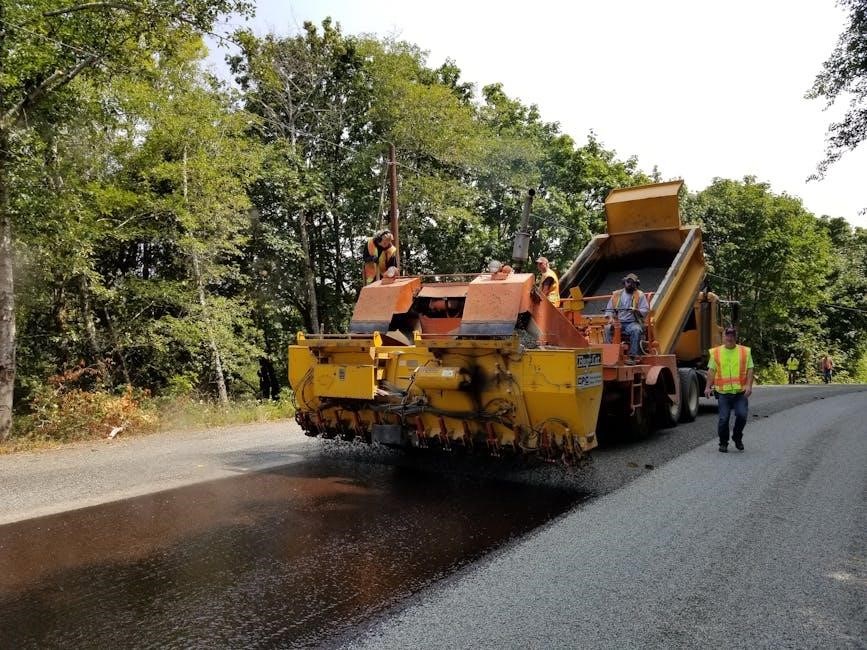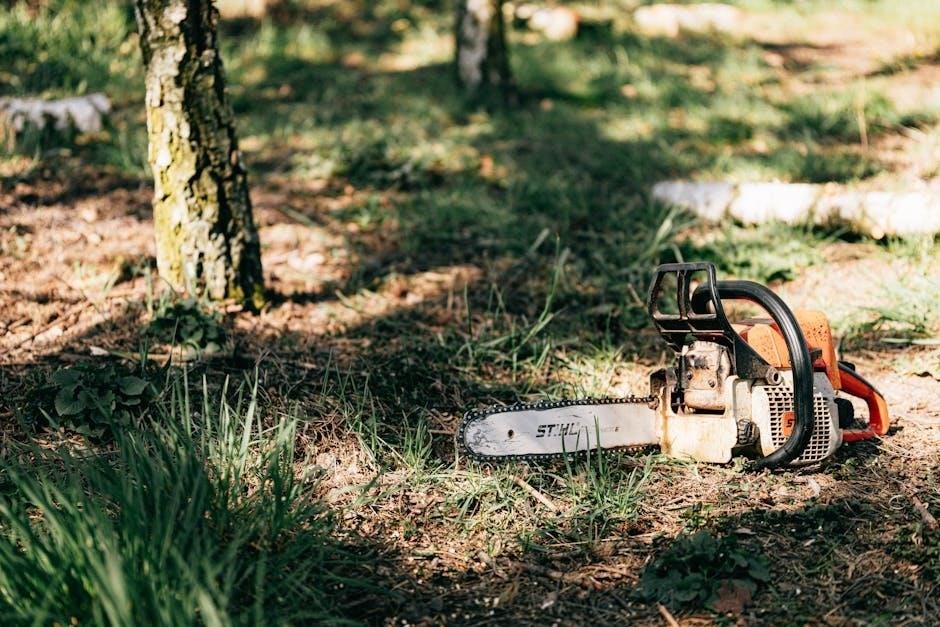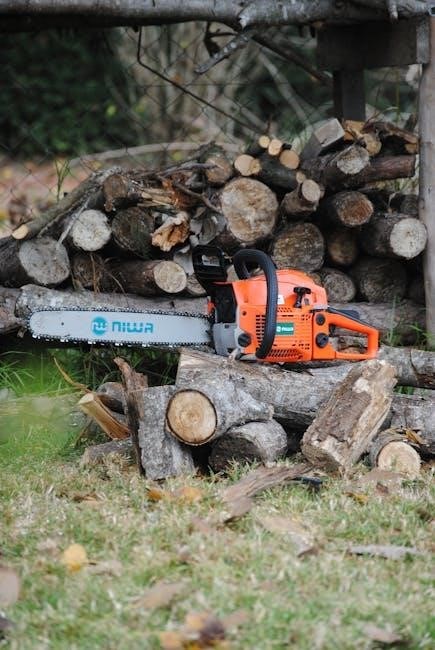Regular maintenance is crucial for ensuring the longevity‚ reliability‚ and performance of your 2017 Subaru Forester․ By following the recommended maintenance schedule‚ you can prevent potential issues‚ optimize fuel efficiency‚ and maintain safety on the road․ Neglecting routine service may lead to costly repairs and reduced vehicle lifespan․
Importance of Regular Maintenance
Regular maintenance is essential for preserving the performance‚ reliability‚ and longevity of your 2017 Subaru Forester․ By adhering to the recommended maintenance schedule‚ you can ensure that your vehicle operates at its best‚ minimizing the risk of mechanical failures and unexpected repairs․ Proper upkeep also enhances fuel efficiency‚ reduces emissions‚ and maintains the safety features of your Subaru․

Neglecting routine maintenance can lead to premature wear and tear on critical components‚ such as the engine‚ transmission‚ and all-wheel-drive system․ Over time‚ this can result in costly repairs and even compromise the vehicle’s overall reliability․ Additionally‚ regular maintenance helps identify potential issues early‚ allowing for timely and often less expensive fixes․
Following the maintenance schedule outlined in your owner’s manual ensures that your Subaru Forester retains its value and performs optimally for years to come․ Whether it’s oil changes‚ tire rotations‚ or inspections‚ each service plays a vital role in keeping your vehicle in top condition․ Regular maintenance is not just about avoiding problems—it’s about ensuring your Subaru continues to deliver the performance‚ comfort‚ and safety you expect․
- Prevents mechanical failures and costly repairs
- Optimizes fuel efficiency and performance
- Ensures safety and reliability on the road
- Helps maintain the vehicle’s value
- Identifies potential issues early
By prioritizing regular maintenance‚ you can enjoy a smoother driving experience and extend the lifespan of your Subaru Forester․

General Maintenance Guidelines
Adhering to the recommended maintenance schedule ensures optimal performance and longevity for your 2017 Subaru Forester․ Regular tasks like oil changes‚ tire rotations‚ and inspections are vital․ Always use genuine Subaru parts and consult certified professionals for service to maintain warranty and reliability․
- Oil changes every 6‚000 miles
- Tire rotations as specified
- Air filter replacements at 12‚000–18‚000 miles
- Inspections of belts and fluids
Understanding the Schedule
The 2017 Subaru Forester maintenance schedule is designed to ensure your vehicle runs efficiently and reliably․ It outlines specific services at various mileage intervals‚ such as 7‚500‚ 15‚000‚ 30‚000‚ and 60‚000 miles․ Each interval includes tasks like oil changes‚ tire rotations‚ and inspections to prevent wear and tear․ Following this schedule helps maintain performance‚ prevent costly repairs‚ and extend the lifespan of your Forester․ Regular servicing also ensures warranty compliance and optimizes fuel efficiency․ Always refer to your owner’s manual or consult a certified Subaru technician for detailed recommendations tailored to your vehicle’s needs․ Proper adherence to the schedule guarantees your Subaru Forester remains in peak condition for years to come․
Importance of Service Intervals
Adhering to the service intervals outlined in the 2017 Subaru Forester maintenance schedule is essential for maintaining the health and performance of your vehicle․ Regular servicing ensures that critical components are inspected and replaced as needed‚ preventing unexpected breakdowns and costly repairs․ By following the recommended intervals‚ you can identify and address potential issues early‚ such as worn belts‚ low fluid levels‚ or damaged tires‚ before they escalate into major problems․ Additionally‚ maintaining a consistent service history can enhance your vehicle’s resale value‚ as it demonstrates responsible ownership․ Subaru’s all-wheel-drive system‚ in particular‚ benefits from regular checks to ensure optimal functionality․ Neglecting service intervals may lead to reduced fuel efficiency‚ compromised safety‚ and a shorter lifespan for your vehicle․ Therefore‚ staying on track with the recommended maintenance schedule is a smart investment in the long-term reliability and performance of your Subaru Forester․

Maintenance Schedule by Mileage

Regular maintenance at specific mileage intervals is crucial for the 2017 Subaru Forester․ Key services include oil changes at 7‚500 miles‚ tire rotations every 7‚500 to 15‚000 miles‚ inspections at 15‚000‚ 30‚000‚ and 60‚000 miles‚ and part replacements as specified;

7‚500 Miles
At 7‚500 miles‚ the 2017 Subaru Forester requires essential maintenance to ensure optimal performance․ The primary service includes replacing the engine oil and oil filter‚ which helps maintain engine health and prevent wear․ Additionally‚ tire rotation is recommended to ensure even tread wear and improve safety․ Inspections of key components such as brakes‚ belts‚ and fluids should also be performed to identify potential issues early․ This service is crucial for maintaining the vehicle’s reliability and preventing costly repairs down the road․
15‚000 Miles
At 15‚000 miles‚ the 2017 Subaru Forester requires a more comprehensive service to ensure optimal performance and reliability․ This interval typically includes an emissions tune-up‚ which involves checking and replacing the engine air filter and cabin air filter․ The engine air filter ensures clean airflow to the engine‚ while the cabin air filter improves air quality inside the vehicle․ Additionally‚ the brake pads and rotors should be inspected for wear‚ and the tire pressure should be checked and adjusted as needed to maintain proper traction and fuel efficiency․ A thorough inspection of the belts and hoses is also recommended to identify any signs of cracking or deterioration․ Finally‚ the vehicle’s fluid levels‚ including coolant‚ transmission‚ and brake fluid‚ should be verified to ensure they are at the appropriate levels․ Following these steps helps maintain the vehicle’s performance‚ efficiency‚ and safety on the road․
30‚000 Miles

At 30‚000 miles‚ the 2017 Subaru Forester requires a more detailed maintenance service to ensure optimal performance and prevent potential issues․ This interval typically includes replacing the engine oil and oil filter‚ which is essential for maintaining the health and longevity of the engine․ Additionally‚ the battery should be inspected to check its charge level and overall condition‚ ensuring reliable starting power․ The belts and hoses should also be examined for signs of wear‚ such as cracks or frays‚ to avoid unexpected breakdowns․ Furthermore‚ the fuel system should be checked for any leaks or blockages‚ and the air filters (both engine and cabin) should be replaced to maintain clean airflow and improve air quality inside the vehicle․ Spark plugs may also need to be replaced at this milestone to ensure proper engine combustion and efficiency․ Finally‚ the transmission and brake fluids should be checked and topped off if necessary‚ and the exhaust system should be inspected for leaks or damage․ Following these steps helps maintain the vehicle’s performance‚ reliability‚ and safety on the road․
60‚000 Miles
The 60‚000-mile maintenance service for the 2017 Subaru Forester is a critical milestone to ensure the vehicle continues to perform optimally․ At this interval‚ the timing belt should be replaced to prevent engine damage‚ as it is a wear-and-tear item that can fail over time․ Additionally‚ the water pump is often replaced at the same time‚ as it is driven by the timing belt and may show signs of wear․ The coolant should also be replaced to maintain proper engine temperature regulation and prevent corrosion in the cooling system․ Spark plugs are due for replacement to ensure proper combustion and engine efficiency․ The PCV (Positive Crankcase Ventilation) valve should be inspected and cleaned or replaced if necessary to maintain proper emissions and engine performance․ Brake pads and rotors should be inspected for wear‚ and the parking brake system should be checked for proper function․ Finally‚ the drive belts (serpentine belt) should be inspected for cracks or signs of wear and replaced if needed․ Following these maintenance steps ensures the Subaru Forester remains reliable‚ efficient‚ and safe to drive‚ while also preventing costly repairs down the road․

Maintenance Tips for Subaru Forester Owners
Regularly monitor fluid levels‚ tire wear‚ and inspect belts to prevent unexpected breakdowns․ Check and replace air filters as needed for optimal performance․ Schedule routine inspections and follow the recommended maintenance schedule to ensure long-term reliability and efficiency of your Subaru Forester․
Monitoring Fluid Levels
Regularly monitoring fluid levels is essential for maintaining the health and performance of your 2017 Subaru Forester․ Engine oil‚ coolant‚ transmission fluid‚ brake fluid‚ and windshield washer fluid levels should be checked at least once a month or before long trips․ Low or degraded fluids can lead to serious engine damage‚ reduced efficiency‚ or even safety hazards․
Start by ensuring the engine oil level is within the recommended range on the dipstick․ If it’s low‚ top it off with the grade specified in your owner’s manual․ Coolant levels should also be inspected to prevent overheating‚ especially in extreme temperatures․ For the transmission fluid‚ consult your manual for the correct procedure‚ as some models may require a warm engine for an accurate reading․

Brake fluid levels should never be low‚ as this can compromise braking performance․ If you notice a drop‚ have it checked immediately by a professional․ Additionally‚ keep windshield washer fluid topped up to maintain clear visibility while driving․ Always use the recommended fluid types to avoid damaging your vehicle’s systems․
By staying on top of fluid levels‚ you can prevent costly repairs and ensure your Subaru Forester runs smoothly for years to come․ Make it a habit to check these fluids regularly and address any issues promptly to maintain optimal performance and safety․
Checking Tire Wear
Regularly checking tire wear is vital for ensuring the safety‚ performance‚ and fuel efficiency of your 2017 Subaru Forester․ Uneven or excessive wear can lead to reduced traction‚ poor handling‚ and increased risk of tire failure․ Start by visually inspecting your tires for signs of uneven wear‚ such as feathering‚ cupping‚ or bald spots․
Check the tread depth by inserting a penny into the tire groove with Lincoln’s head facing down․ If you can see the top of his head‚ the tread is worn down to 2/32″ or less‚ and the tires need replacement․ Additionally‚ look for cracks in the sidewalls‚ bulges‚ or punctures‚ which can weaken the tire’s structure․
Proper tire pressure is also essential for even wear and optimal performance․ Use a tire pressure gauge to ensure the pressure matches the specifications in your owner’s manual‚ not the maximum pressure listed on the tire itself․ Check pressure when the tires are cold for an accurate reading․
Rotate your tires every 15‚000 miles or as recommended in your maintenance schedule to promote even wear and extend their lifespan․ If you notice any irregularities or concerns‚ consult a professional to address them promptly․ Regular tire checks can improve safety‚ enhance performance‚ and prevent costly repairs down the road․
Inspecting Belts
Inspecting belts is a critical part of maintaining your 2017 Subaru Forester․ The serpentine belt‚ which powers essential systems like the alternator‚ water pump‚ and power steering‚ should be checked regularly for signs of wear and damage․ Over time‚ belts can crack‚ fray‚ or become misaligned‚ leading to potential failure․
Begin by visually inspecting the belts for cracks‚ frays‚ or uneven wear․ Listen for unusual noises‚ such as squealing or chirping‚ which may indicate a loose or worn belt․ Check the belt tension by pressing firmly; it should feel firm but not overly tight․ If the belt feels slack or sags excessively‚ it may need adjustment or replacement․

According to the maintenance schedule‚ belts should be inspected every 15‚000 to 30‚000 miles․ Replace the serpentine belt as recommended‚ typically around 105‚000 miles‚ to avoid sudden failure․ Additionally‚ ensure all drive belts are properly aligned and free from contamination like dirt or debris‚ which can accelerate wear․
If you notice any damage or suspect a belt is failing‚ have it replaced immediately․ A broken belt can leave you stranded and potentially damage other engine components․ Regular inspections and timely replacements will help maintain your Subaru’s reliability and performance on the road․


